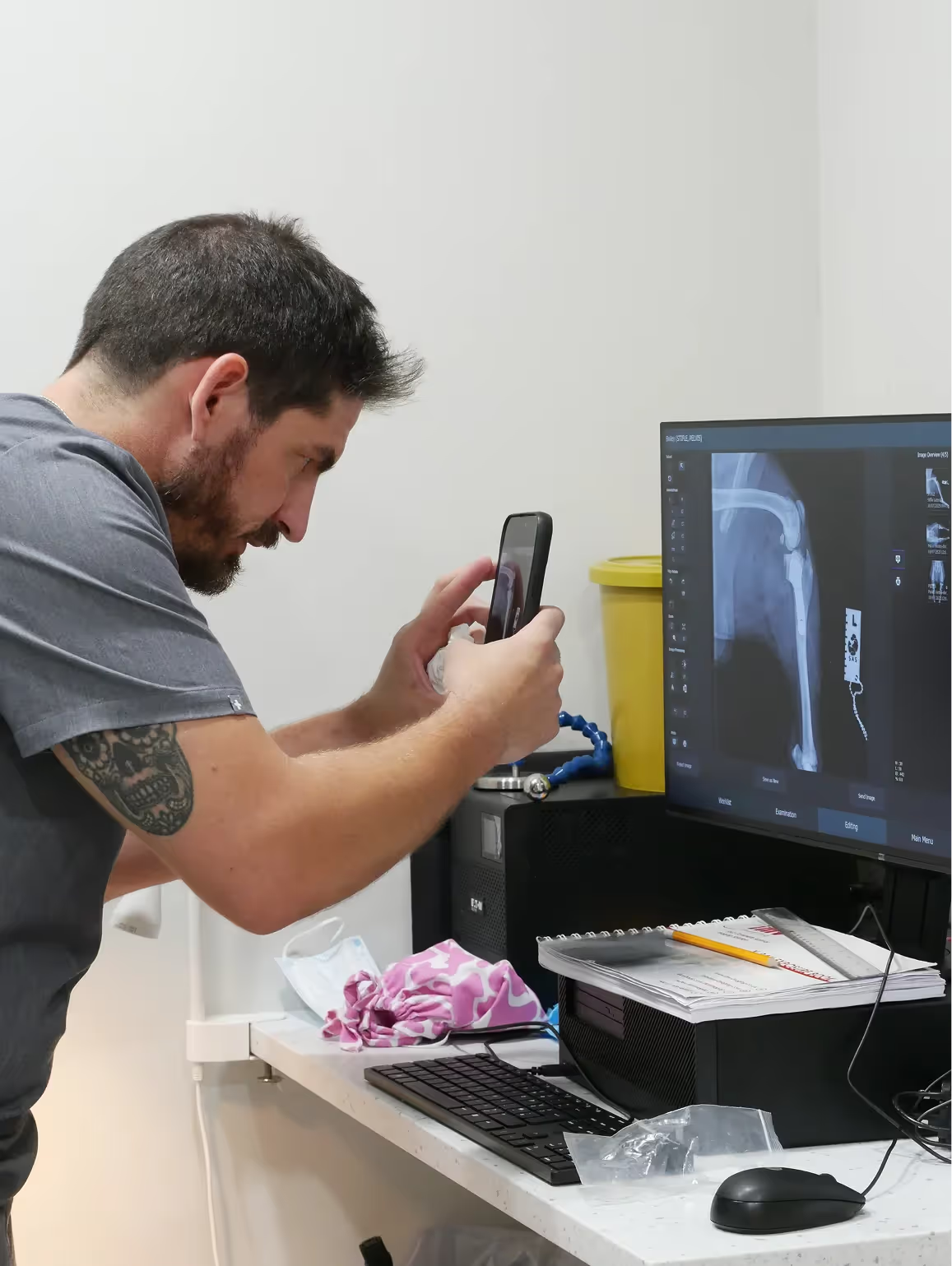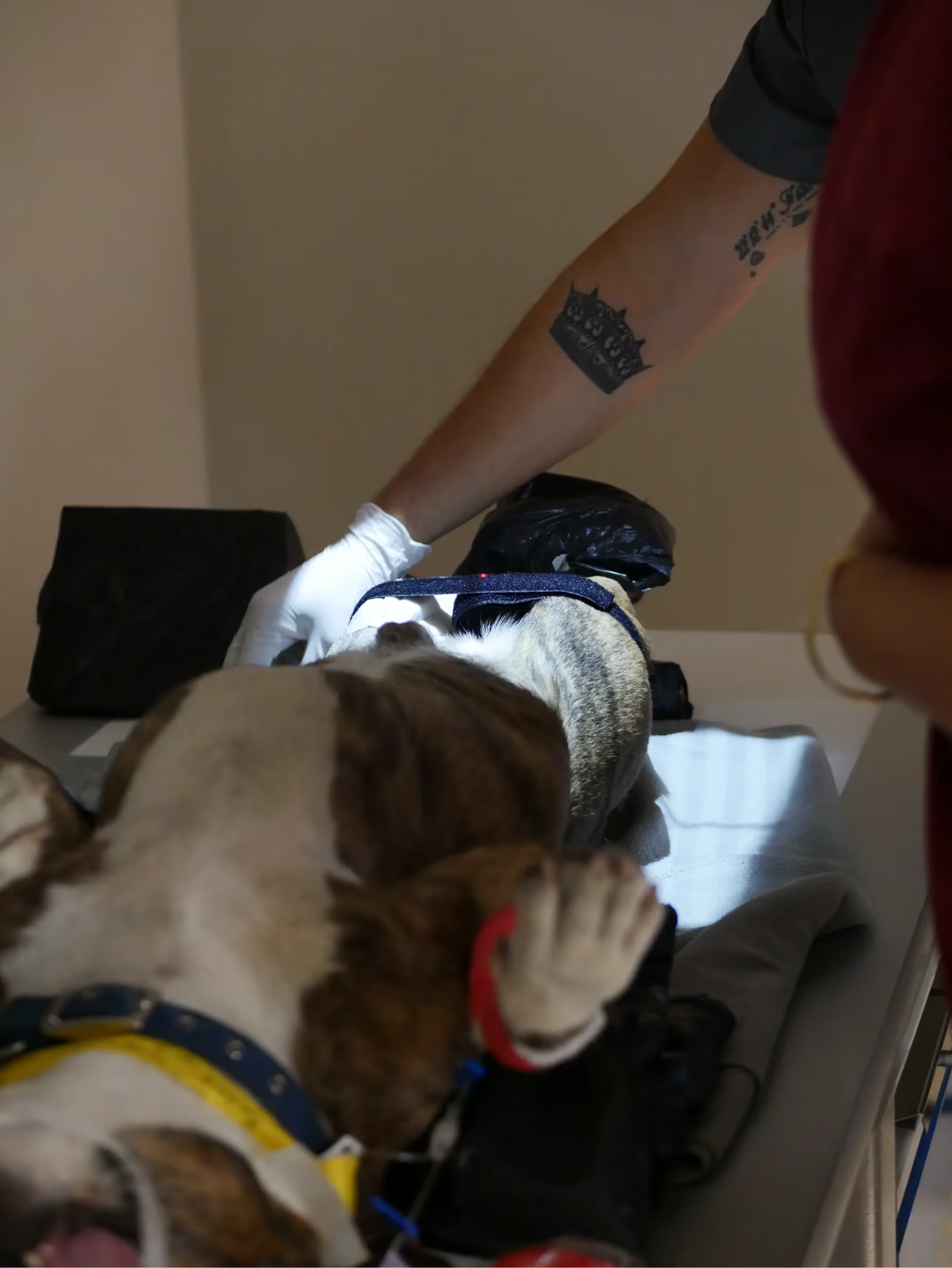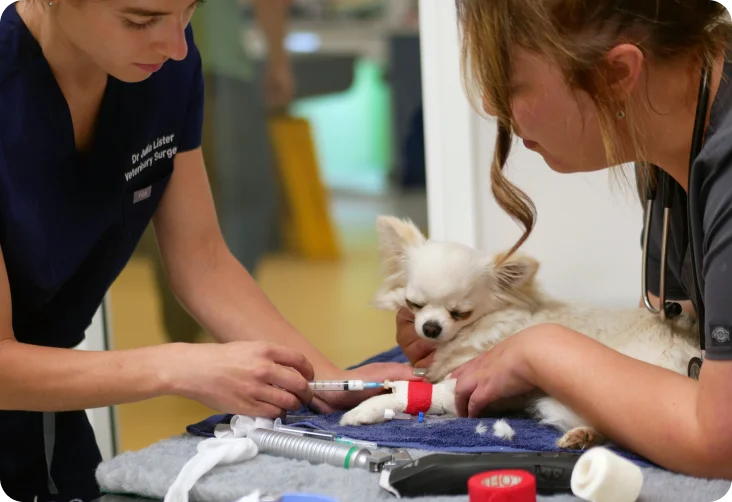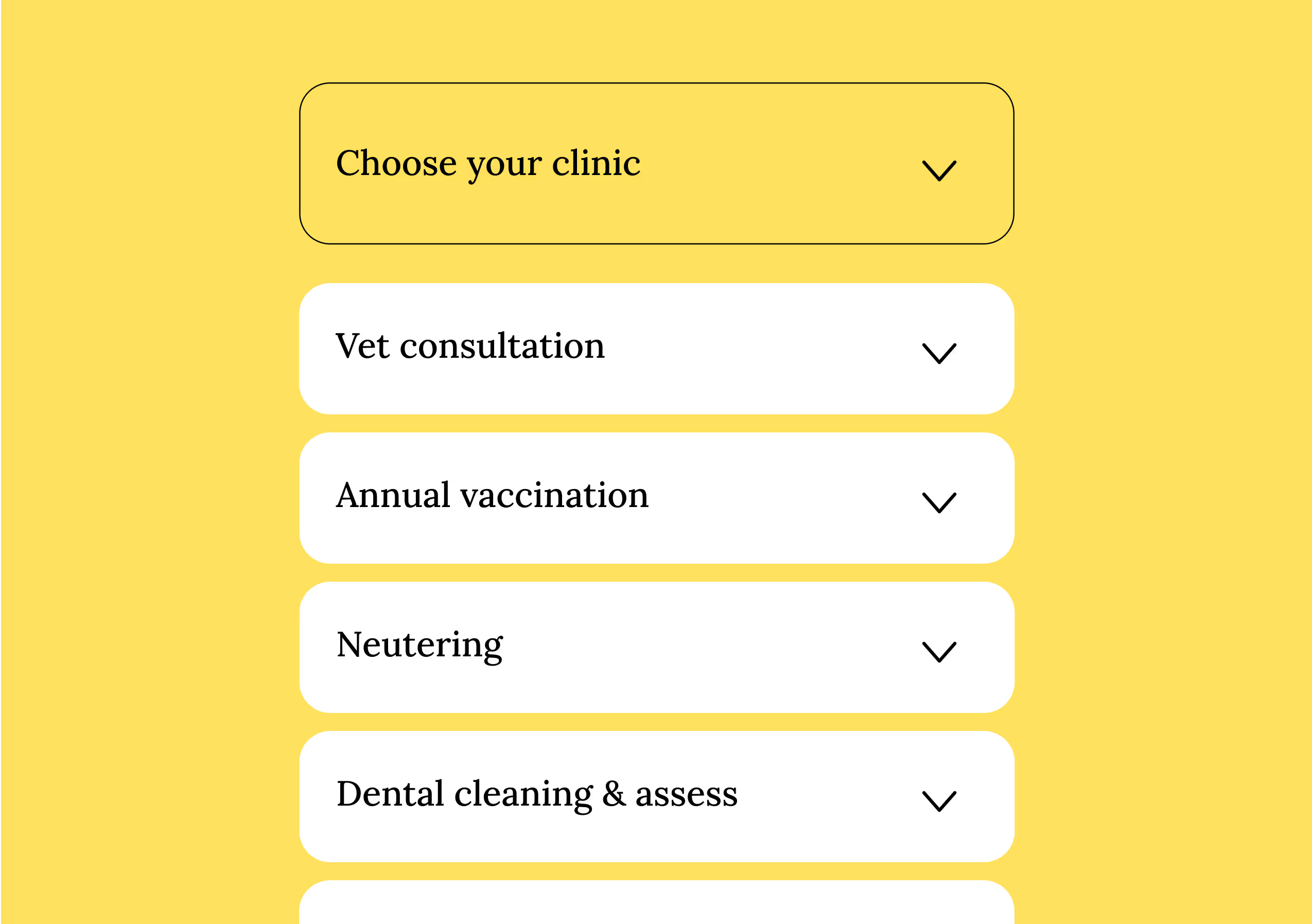X-rays
With a dedicated x-ray suite and expert radiologists on hand, we give your pet the best possible care.

With a dedicated x-ray suite and expert radiologists on hand, we give your pet the best possible care.



At Hello Vet, we have a dedicated x-ray suite with digital radiography, which means we are able to capture high-quality images quickly to check for any orthopaedic or soft tissue changes your pet may have. We often work collaboratively with expert radiologists to make sure we’re giving your pet the best possible care.

Used to evaluate the structures within the chest, including the lungs, heart, and major vessels. Thoracic x-rays can help detect lung patterns, fluid accumulation, tumors, or other abnormalities.
Used to assess organs within the abdominal cavity such as the stomach, liver, spleen, kidneys, and intestines. These images can aid in diagnosing issues like blockages, organ enlargement, or the presence of foreign bodies.
Used to examine the bones and joints, including the spine, skull, forelimbs, and hindlimbs. Helpful for detecting fractures, joint problems, or developmental issues.
It is used to assess dental roots and the extent of periodontal disease, helping vets determine the most appropriate treatment for the tooth—such as extraction, monitoring, or other options.
Unfortunately, you cannot be present during your pet’s x-rays, as this is to protect you from unnecessary exposure to radiation. However, we aim to keep the time your pet is away from you as short as possible. If sedation or general anaesthesia is needed, you're welcome to stay with your pet during the initial stages until they are calm or sleepy enough for the procedure.
In many cases, sedation or general anaesthesia is recommended to ensure your pet remains still as movement can result in blurry images that are not suitable for interpretation. However, if your pet is calm and able to stay still, or if they have respiratory concerns that make sedation risky, we may perform the x-rays without it. Each case is assessed individually to ensure the safest and most effective approach.
X-rays involve a low dose of radiation and are considered very safe for pets when used appropriately. We take all necessary precautions to limit exposure and only perform x-rays when medically necessary. The benefits of obtaining clear diagnostic images far outweigh the minimal risk involved.

We've redesigned vet care, from your pet's perspective. Calming care in clinics purpose-built for anxious pets.

Instant WhatsApp advice and same-day appointments. We team up with you at every step because you know your pet best.

“We built Hello Vet on the belief that fully cared-for clinicians provide better care for every pet.”
Dr. Christian LeVan, Clinical Director

Free advice over WhatsApp, provided by our clinical team. We've saved our clients thousands in fees.

We’re the UK’s first vet to let you stay with your pet during procedures, when they need you most.

Our clinics are designed by vets to keep anxious pets calm. Sunken scales, separate waiting areas, treats. Open 7 days a week.

Our prices are public, we share cost estimates upfront and we offer contextualised care, exploring treatment options for every budget.